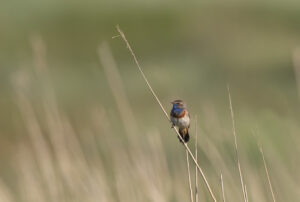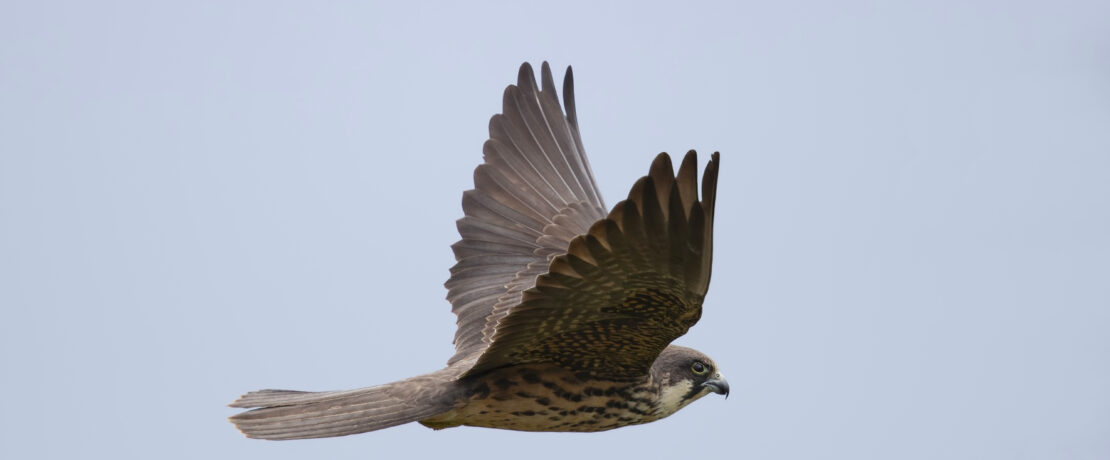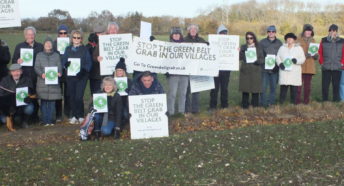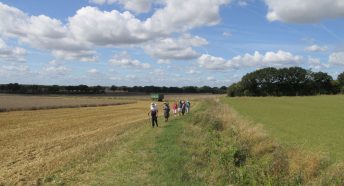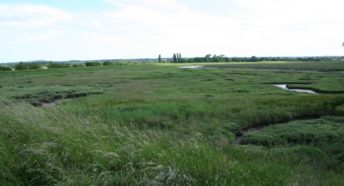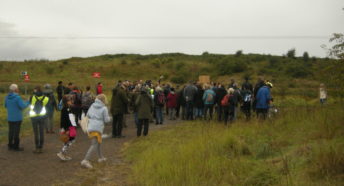The big society
David Mairs reports on how an increasingly influential player in our landscape is tackling a range of issues as it establishes a network of nature reserves across the county
“This is one of the big conservation stories.” Alan Johnson, RSPB area manager for Kent and Essex, is perched on a bench at Northward Hill nature reserve looking over Halstow Marshes talking about the work his organisation is carrying out in the Thames estuary to restore swathes of an area under siege from development but somehow still fabulously rich in wildlife.
“We have created a network of hotspots on a landscape scale for breeding waders on the North Kent Marshes – building on the work of the Elmley Conservation Trust, which knocked the ball out of the park.”
The RSPB (Royal Society for the Protection of Birds) has taken on an impressive suite of sites in north Kent and been restoring them to their wet-grassland glory. Shorne Marshes, Higham Marshes, Cliffe Marshes, Northward Hill, Great Bells Farm (Sheppey), Seasalter Levels… the society has been busy in this part of the world, while, county loyalties aside, it would be remiss not to mention reserves such as Rainham Marshes and Bowers Marsh over the Thames in Essex.
The RSPB has had a presence in north Kent for many years, but what has sparked the intensity of focus?
“The 2008 financial crash kind of got that going. We took the view that we were spread too thinly and should instead prioritise certain landscapes, reducing the number of areas we’re involved with,” says Johnson.
“The Greater Thames Estuary hosts the largest assemblage of waterfowl in the UK, while there are also breeding seabirds and waders. It is possibly the most important ecological landscape in the country, so it was one of the obvious places.”
Of course, there was recognition that the RSPB couldn’t do everything itself – if there was to be genuine landscape-scale conservation, a whole range of other landowners and managers needed to be involved.
“We’re working with farmers on the North Kent Marshes, gearing up to do a load of stuff. We’re helping with grants and with advice on conservation management, while organisations such as the PLA [Port of London Authority] are also interested in what we’re doing.”
The perhaps obvious question is what is driving farmers to jump on the nature conservation rollercoaster – financial incentive or the love of wild spaces and the nature within them. “It’s a bit of both,” says Johnson. “Some are doing wetland restoration work with no financial reward at all.”
To some extent underpinning everything is government policy and Johnson points to ELM (Environmental Land Management) as particularly important.
This three-tier scheme aims to switch from farm support based on direct payments towards a policy based on ‘public money for public goods’. With the phasing out of the Basic Payment Scheme and the government believing that direct payments were a poor use of public money, under ELM farmers and other land managers will now be paid largely for delivering environmental benefits rather than according to the amount of land they farm.
The ambition for the North Kent Marshes is great but not without significant financial cost. So the Green Recovery Challenge Fund award in 2020 of almost £1,900,000 to the RSPB, Kent Wildlife Trust and Canterbury City Council was, it is fair to say, welcome.
The money was to be targeted at the Seasalter Levels, Wraik Hill Local Nature Reserve near Whitstable and Blean Woods RSPB reserve… because we are fortunate both that the North Kent Marshes is far from the county’s only natural treasure and that conservation bodies are heavily invested in them.
In addition to a chunk assigned as a National Nature Reserve, both the RSPB and KWT have substantial holdings in the Blean, that expansive if broken swathe of woodland lying primarily north of Canterbury. It contributes the largest population of nightingales on any RSPB reserve, there is a strong population of the declining lesser spotted woodpecker and the nationally rare heath fritillary butterfly has its stronghold here.
All reason to be cheerful, but as ever things are never going to be quite so simple. Every spring, the Sarre Penn, which runs through the Blean, reduces to barely a trickle, while overall too much water is lost to the woods. Or, in other words, the Blean has been drying out.
It was while blocking streams in the woods with sticks “with my youngest, William” that the lightbulb moment sparked for Johnson.
“There are many man-made drainage channels in the woods, but they don’t have stops or sluices – so we’ve been putting in leaky log dams or earth dams to help keep some of that water. We’re also changing the old, canalised streams so they can get their old meanders back and work better for wildlife,” he says. “It’s a lot of work, but many woodland bird species have been lost.
“Although the Blean has so many positives, it also has a lot of boring single-age woodland with poor structure. We’re opening this woodland out while tackling issues of water, age and structure. There’s an emerging strategy to make the woods of the Blean more connected.”
Whether talking wood or wetland, an unavoidable theme is that of water – or more specifically the lack of it. At the time of writing, Kent is one of several parts of the country to have just been declared a drought area by the National Drought Group, citing our driest summer in 50 years.
Few now dispute that climate change is responsible to some degree at least for what is becoming an increasingly stressful situation and the RSPB is preparing for probable repeat events.
Hot, dry weather makes the Thames estuary vulnerable to the drying-out of pools and the resultant loss of invertebrates at just the time the wader chicks so dependent on them are fledging.
Parallel to this is coastal squeeze – “the loss of natural habitats or deterioration of their quality arising from anthropogenic structures or actions” as defined in a government report. Clearly, doing nothing is not an option.
“We have to consider saline options where sites can’t be maintained as freshwater, but there is still the need to protect viable freshwater options. The Thames marshes, for example, are reliant on rainwater input.”
Water, predictably, is a primary concern at another relatively recent RSPB acquisition in Kent – Lydden Valley, near Sandwich, which drew some 3,000 birdwatchers in May this year to see just the 11th Eleonora’s falcon recorded in this country.
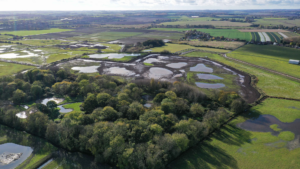
For many who had travelled from across the UK, it was their first acquaintance with a site known more widely among locals as Worth Marshes. Seeing the rarity was the one and only priority in a venture sometimes bordering on the obsessive (although most also hoped to connect with another scarce visitor in the shape of a red-footed falcon), but it has been evident that the reserve – which entailed the purchase of three farms and their subsequent reversion to largely wetland habitat – made a big impact on the travelling hordes.
However, they have seen nothing yet: “The really dramatic stuff is yet to happen,” says Johnson. “The water that’s there is only about 5 per cent of what will ultimately be a much more extensive wetland. By next breeding season, we’ll be 70 per cent there in terms of water – it will be another five years till we hit 100 per cent.
“The site has a complicated hydrology and we need a larger volume of water to run it as a reserve than we are currently licensed to abstract.
“Abstraction issues should be sorted out soon, but water is low. We need rainfall – there’s a wider scenario where we might be running out of water in May and June, although solar pumps at that time could be a game-changer.”
Meteorological predictions indicate that England will be receiving more rain in the winter and less in summer (the latter at least seems nailed on!) and the challenge is how we store the rain that does fall to cover for those times of potential drought.
On a personal level, Johnson has made a start at Northward Hill. “I built that,” he says gleefully, beckoning towards the ‘wobbly’ water-storage feature… it even has islands!
Back in east Kent, Lydden Valley is an example of how complex the process of establishing a nature reserve can be, especially one where landscape changes are the driving force.
If the water issues weren’t taxing enough, there was the matter of taking ownership of the three farms as they came into the society’s hands sequentially rather than in one block. Restoration grants came soon after the site had been bought in its entirety.
And at Seasalter, another reserve with genuinely exciting potential, a complicated and landmark legal case via the Access to the Countryside Act 1949 was necessary to secure the land through compulsory purchase… and now comes Kent’s biggest habitat-restoration project of the lot.
As at Lydden Valley, public access is an issue. “The seaward side of Seasalter Levels is the most heavily disturbed part of the Greater Thames SPA – we need to think carefully about that as we have to put wildlife first. Sometimes there needs to be a buffer that not everyone visiting a reserve will be happy with,” says Johnson.
It’s arguable that nature has never been in a greater state of flux than it is now. Rampant levels of urban and industrial development continue to impact massively, while, potentially allied with that, climate change is affecting bird distribution at an almost dizzying rate.
Cattle, little and great egrets are now well established in England, while little bitterns, purple herons and black-winged stilts are among the primarily southern species to have bred here in recent years. (The pair of purple herons that raised two young at Kent’s own Dungeness RSPB reserve in 2010 were the first ever to nest successfully in this country.)
While we will probably lose some species, the RSPB is preparing to welcome those likely to be joining us in the near future – indeed, it was one of the principal factors in pursuing the Lydden Valley project.
“We’re working on our reserves to accommodate the arrivals,” says Johnson. “It’s likely to be all the more important as birds struggle with the drying out of Spain’s Coto Doñana and the change of management policy at Oostvaardersplassen [the Dutch site so long portrayed as the exemplar of rewilding in Europe].”
Switches in direction are always going to be as evident in nature conservation as in anything else, as Johnson points out.
“There was a lapwing-factory mode here when I moved to Kent. It was a very RSPB thing to do – get obsessed about species delivery results – but while we’re still a species-focused organisation we’ve realised you can’t achieve for those species without working on a landscape scale.”
Today’s approach sits neatly with the Lawton principles, derived from the 2010 governmental review that “looked at our wildlife sites and whether they are capable of responding and adapting to the growing challenges of climate change” and highlighted the need for more, bigger, connected wildlife sites.
The clutch of reserves on the North Kent Marshes goes a long way towards that concept, but perhaps as important is the increasingly healthy relationship between the RSPB and other landowners and operators in the area, where “there’s big support for what we do”.
And in another encouraging development, Johnson points to greater cooperation among conservation groups: “We work hand in glove these days with other NGOs [non-governmental organisations] – there used to be a disconnect.”
That has been evident recently with the RSPB, CPRE Kent, Save Swanscombe Peninsula and Kent Wildlife Trust putting on a unified front during the battle to spare a nationally important wildlife site in north Kent from the ravages of a theme park.
In a time when good news can seem a little thin on the ground, the work being done by the RSPB and others is cause for cheer.
“The hard yards in conservation is the way the land is managed,” says Johnson. Let’s raise a glass to those who are putting them in.
- This article was first published in the Autumn-Winter 2022/23 edition of Kent Countryside Voice
